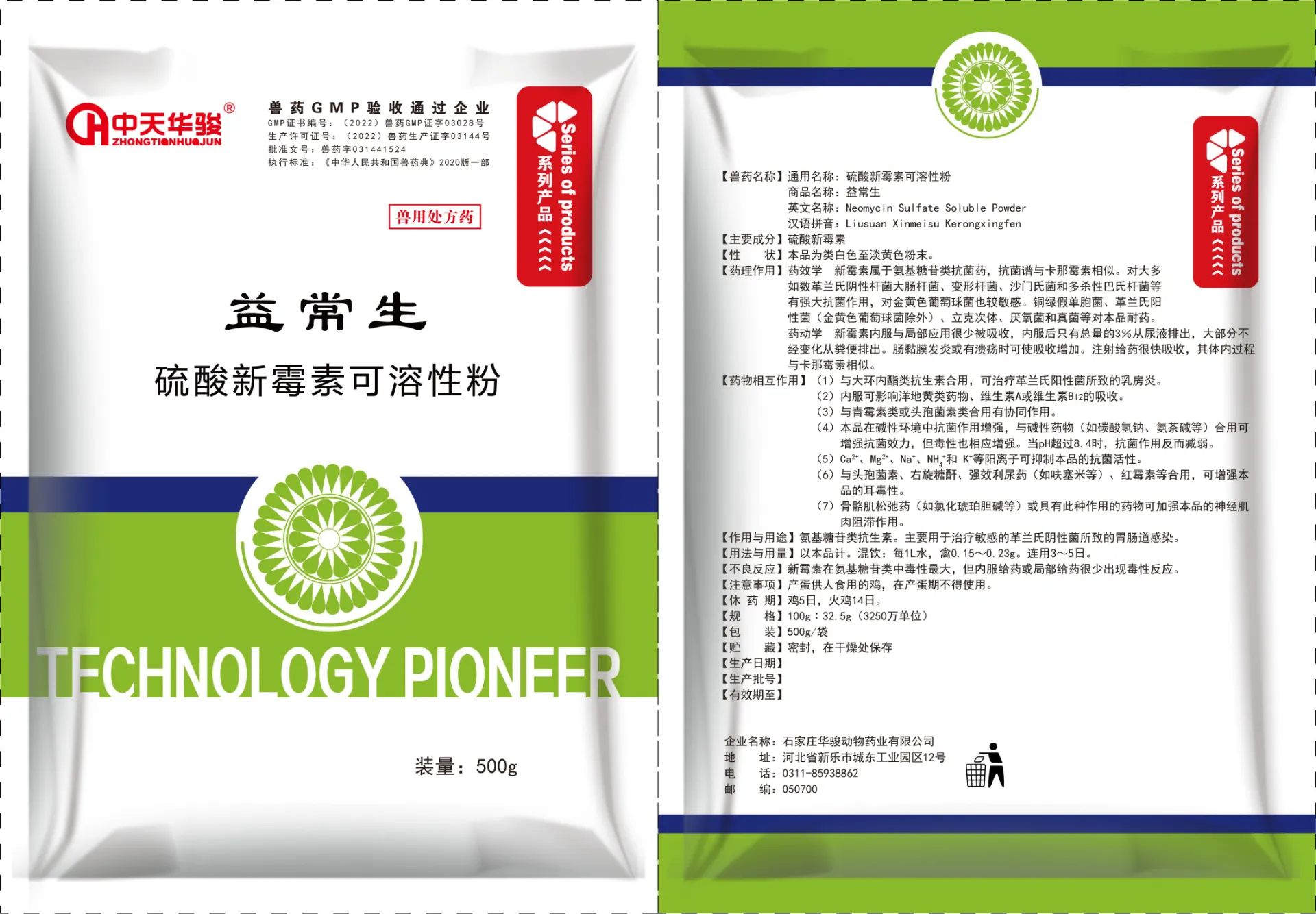
আগস্ট . 21, 2024 10:05 Back to list
Custom Formulations of Sulfadiazine, Trimethoprim, and Tylosin for Enhanced Veterinary Care
The Impact of Custom Sulfadiazine, Trimethoprim, and Tylosin in Veterinary Medicine
In recent years, the development and utilization of custom medications in veterinary medicine, particularly combinations of sulfadiazine, trimethoprim, and tylosin, have garnered increasing attention. These compounds have shown promise in treating various bacterial infections in animals and improving overall herd health. Understanding their roles, mechanisms, and applications is essential for veterinarians and animal care professionals.
What Are Sulfadiazine, Trimethoprim, and Tylosin?
Sulfadiazine is a bacteriostatic antibiotic that belongs to the sulfonamide group. It works by inhibiting the synthesis of folate, which is crucial for bacterial growth and reproduction. Trimethoprim, often combined with sulfadiazine, enhances efficacy by providing a dual mechanism of action, targeting bacterial dihydrofolate reductase, which further disrupts folate synthesis in microbes. Tylosin, a macrolide antibiotic derived from *Streptomyces fradiae*, is used primarily for its efficacy against Gram-positive bacteria and certain Gram-negative organisms.
Each of these drugs has distinct properties that make them suitable for different therapeutic applications. The combination of these antibiotics can be particularly effective in treating infections, especially in livestock and companion animals, where bacterial resistance is a growing concern.
Applications in Veterinary Medicine
The combination of sulfadiazine and trimethoprim is widely employed to treat various infections in dogs, cats, and livestock, including pneumonia, urinary tract infections, and enteritis. The synergistic effect of these two drugs ensures a broader spectrum of activity against a wide range of pathogens, making it easier to manage infections caused by multi-resistant bacteria.
Tylosin is primarily utilized in livestock for the treatment of respiratory and gastrointestinal diseases. It is also frequently incorporated into feed to promote growth and improve feed efficiency. This antibiotic plays a crucial role in the management of diseases like swine pneumonia and necrotic enteritis in poultry.
custom sulfadiazine trimethoprim tylosin

Benefits of Custom Formulations
Custom formulations of sulfadiazine, trimethoprim, and tylosin allow veterinarians to tailor treatment regimens specific to the needs of individual animals or groups within a herd. This customization can enhance efficacy, reduce side effects, and address concerns related to drug resistance. By adjusting dosages and combinations, veterinarians can create targeted therapy plans that optimize treatment outcomes.
Additionally, custom formulations can be beneficial in situations where conventional products are unavailable or unsuitable due to specific microbial resistance patterns. This flexibility is vital in regions where bacterial strains may have adapted to commonly used antibiotics.
Challenges and Considerations
Despite the clear benefits, there are challenges associated with the use of these antibiotics. One significant concern is the potential for developing antibiotic resistance. Overuse or misuse of these drugs can lead to resistant populations of bacteria, which not only undermine treatment efficacy but also pose risks to human health. Therefore, judicious use of these antibiotics is essential in veterinary practices.
Moreover, regulatory considerations must be taken into account. The veterinary community must ensure that the use of these antibiotics complies with local regulations and guidelines, particularly in food-producing animals. The need for appropriate withdrawal periods before slaughter is crucial to safeguard consumer health.
Conclusion
Custom sulfadiazine, trimethoprim, and tylosin formulations represent a significant advancement in veterinary medicine, allowing for targeted and effective treatment of infections in animals. While their benefits are clear, the responsibility lies with veterinarians to use these powerful tools judiciously. Ensuring the health of animals while minimizing the risk of antibiotic resistance is essential for sustainable veterinary practices and public health. As research continues to evolve, these compounds will remain integral in the fight against bacterial infections in veterinary medicine, promoting healthier animals and safer food production.
-
China Salivation AI with GPT-4 Turbo Features
NewsAug.01,2025
-
Epic Sepsis Factories: AI-Driven Detection with GPT-4 Turbo
NewsJul.31,2025
-
Acute Salpingitis and Oophoritis AI Factory
NewsJul.31,2025
-
Premium China Bacillus Subtilis Supplier & Factory Solutions
NewsJul.30,2025
-
Premium Avermectin Supplier in China | Custom Solutions Available
NewsJul.29,2025
-
China Bacillus Subtilis Supplier - Custom Factory Solutions
NewsJul.29,2025




